Harbour Health Project
The Ucluelet Aquarium Society is partnering with a number of the area’s organizations to map the eelgrass meadows in the Ucluelet harbour.
Globally, eelgrass beds, one of these important marine habitats, are declining in area by 1.5% per year and so far, 30% of their historical numbers have been lost.
The Ucluelet harbour is home to many eelgrass beds, and through them, supports and sustains life and all the economies that allow us to reside here on the west coast. The harbour provides important nurseries and habitats for a variety of marine species, from hooded nudibranchs to small-eye shrimp, as well as more culturally and economically cherished species such as herring, salmon and endangered abalone. It also provides a medium of transportation to and from communities and to and from marine harvesting locations. As with many environmental features, the health of the harbour has been taken for granted for a long time, and while the resident population of Ucluelet may be small, the user group of the Ucluelet Harbour is made up of a much larger network of people and industries. Eelgrass beds are also fantastic at sequestering excess carbon and other nutrients that would otherwise contribute to an unhealthy ocean. Those lucky to own waterfront should also be grateful for eelgrass beds, as they play vital roles in erosion control. Without them, storms would batter the coastline and wipe out docks, houses, and beaches. Our harbour is an active one, with things such as dredging, docks, pollution from boats and wastewater, and invasive species such as the European green crab posing risks to the health of our eelgrass gardens.
There are two species of eelgrass here that we will focus on: Zostera marina and Zostera japonica. Our goals with mapping these important habitats is to learn more about the ecosystems here. Salmon returns have been poorer than historical runs, and fishing is a way of life for many people here. We are curious how local eelgrass health is impacting our human lives. Our small community continues to grow, so with increased activity comes increased pollution. It is important to keep tabs on these ecosystems to ensure we are all flourishing together. Depending on the findings from the surveys, we may go forward with restoration work which will mean planting new shoots in diminished or depleted areas or looking for ways to reduce or eliminate what is harming them.

Marine Debris Initiative
Our Microplastic and Marine Debris initiative was one of the first projects in British Columbia to scientifically monitor microplastic pollution in coastal sediments.
The Ucluelet Aquarium conducted monthly surveys that engage citizen scientists through data collection of microplastic pollution in sediment along local beaches.
Microplastics and Marine Debris have serious impacts on the marine environment. Marine species often will ingest or become entangled in plastic causing injury or death. Plastic has even become a vessel for invasive species altering the balance of some ecosystems. Plastic contains chemicals, as well as accumulates toxic contaminants leading to issues of bioaccumulation of toxins in food chains, with possible implications for human food safety and health.
Read our Final Report to learn more about our marine debris findings.


Sea Star Wasting Syndrome
In recent years, much of the Pacific coast of North America has experienced a mass die-off of its sea star population. Since the first case documented in June 2013, this disease known as “sea star wasting syndrome” (SSWS) has now affected up to 20 different species of sea stars. Symptoms of the SSWS include lesions, limb autotomy, loss of turgor, and eventually death by rapid tissue disintegration.
The Ucluelet Aquarium has paired with the Strawberry Isle Marine Research Society and UCSC to conduct monthly sea star surveys. The surveys will help researches assess the progression and extent of the disease.
For more information on sea star wasting visit strawberryisle.org.

Bivalve Survey
When making repairs to their submarine power cables (buried up to one metre deep) BC Hydro noticed an abundance of algae and animal growth including clams. In an effort to minimize damage to those animals, BC Hydro’s environment department would quickly set them aside and rebury them in the same spots when the work is complete.
To better understand the effectiveness of their methods, BC Hydro embarked on a study with the help of Dr. Barbara Beasley, Reddfish Society (formerly known as Central Westcoast Forest Society) and our team at the Ucluelet Aquarium. Together, we tested BC Hydro’s best practices to protect the clams using the Ucluelet mud flats as a study site. We asked: what are the effects on clams after they are dug out, exposed and reburied? We compared different exposure times for the clams, including: clams that remain buried, clams that have been dug up and reburied immediately and clams that are left out for two hours before reburying.
For more information about the study, read BC Hydro’s article. Stay tuned for the results of the experiment!
